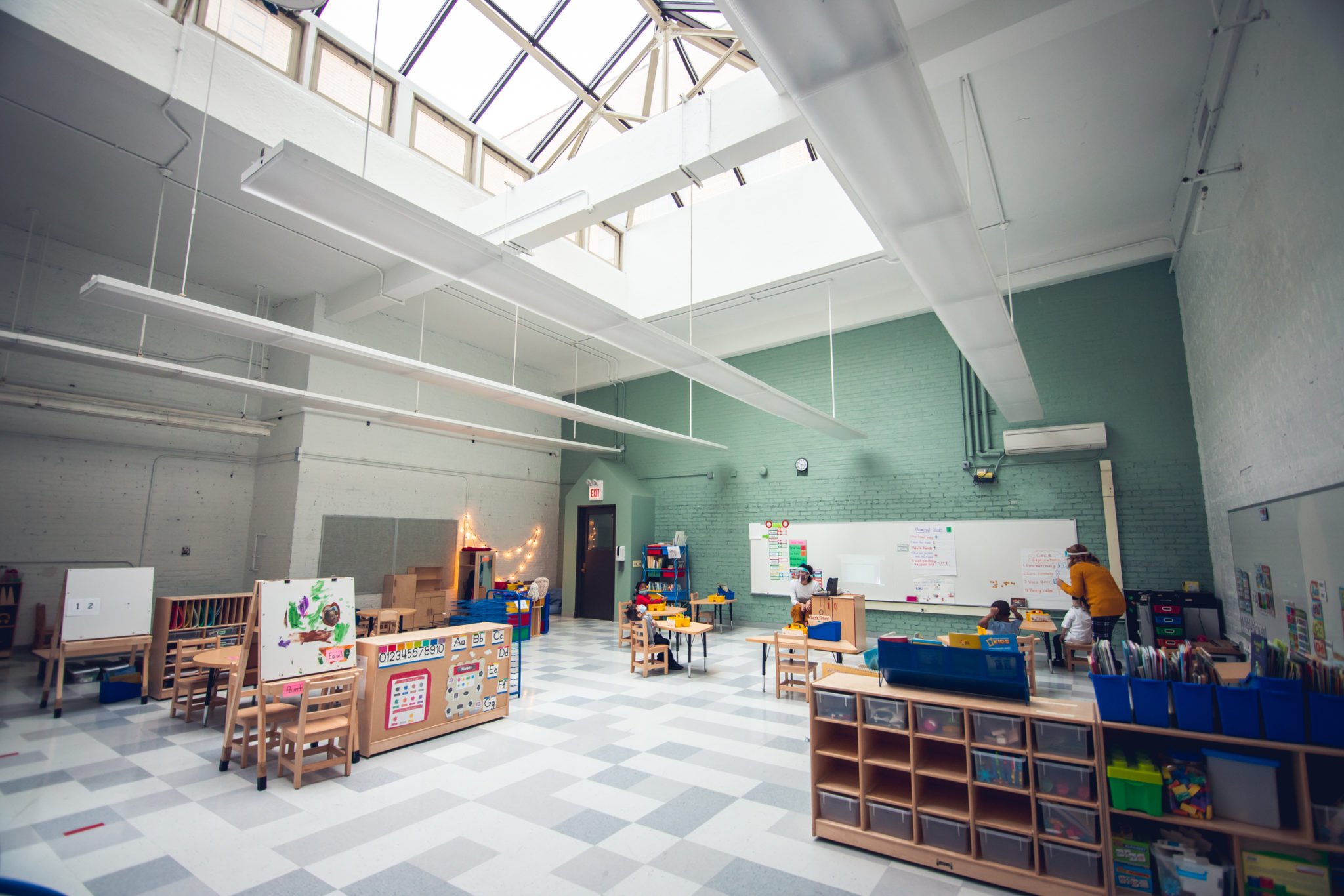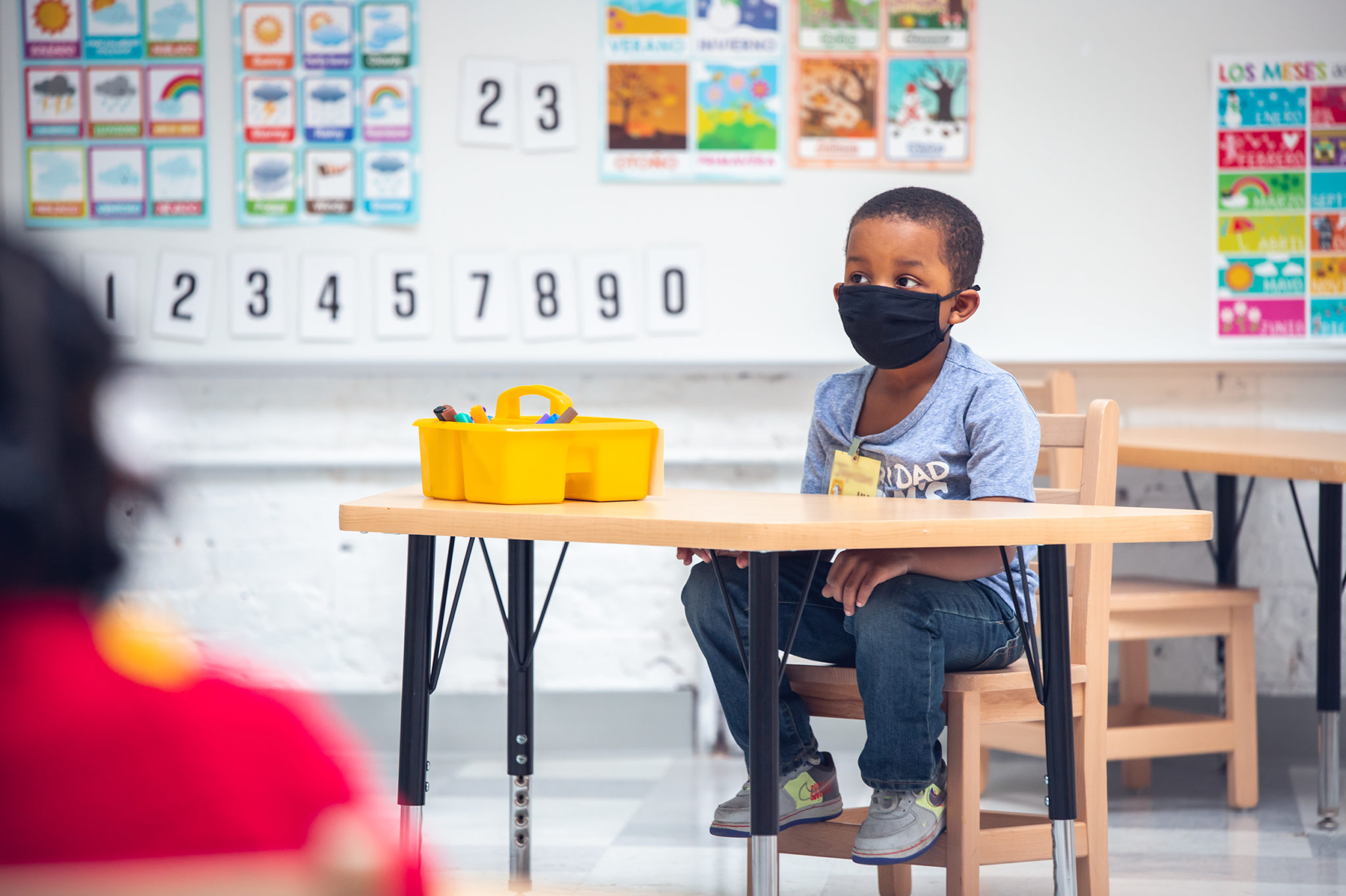Preparing for a Return to School | Preparaciones para el regreso a la escuela
24 February 2021
Five important topics that you should know about before your child begins learning in person.

For tens of thousands of elementary school students who will be coming back to school in the coming weeks, it will likely be the first time they have set foot inside a school building in nearly a year. While some aspects of the school day will be familiar, such as the start and end times and high-quality instruction, there will also be new health and safety practices in place to keep students and staff safe.
Below are five important topics that you should know about before your child begins learning in person. Additional information and resources can be found at the district’s newly updated reopening website at cps.edu/reopening.
1. Familiarize yourself with the district’s health screener
On days when your child is coming to school, you must complete the district’s online health screener before they can enter the school building. The screener is a series of questions about your child’s health meant to help minimize the spread of COVID-19.
If you have opted in to receive text messages from the district, you will receive a text message with a link to your child’s health screener each morning before they are scheduled to learn in person. You can also access the health screener at cps.edu/healthscreener.
Upon arrival at school, a CPS staff member will confirm that your child’s health screener has been submitted before they go to their classroom.
More information about completing the health screener and opting in to CPS text notifications can be found on the CPS website or through the video below.
2. Help your child understand the hybrid model
Most K-8 students who are returning to in-person learning will learn at their school two days per week—either Monday and Tuesday or Thursday and Friday—and remotely the other three days per week.
The district has created examples to help you explain to your child how in-person and remote days will differ.

3. Understand your school’s new attendance procedures
Under the hybrid model, families who chose to return to in-person learning are expected to send their child to school on all scheduled in-person days. If your child does not pass the health screener, they are expected to stay home and participate in remote learning if they are well enough to do so.
If your child arrives at school on a day when they are scheduled to learn remotely, they will not be able to instead learn in person on that day. You will need to bring them home.
Families who selected in-person learning may switch to a fully remote learning model at any time. Please notify your school if you would like to do so.
More information on attendance, as well as other topics like grading, social-emotional learning, and simultaneous instruction, can be found in the district’s Reopening Guide for Parents at cps.edu/reopening.
4. Talk with your child about important safety practices
Wearing a face covering and social distancing will be two of the most effective practices that your child will use to stay safe while learning in person. Make sure to set these expectations with your child and help them understand how these practices may differ from their experience learning remotely. The district has compiled a list of resources to help you have these conversations.
- This Q&A will help you answer common questions your child may have about face coverings
- I Can Wear a Mask (Puedo usar una mascarilla) is a picture book that will help your child understand how to wear a face covering properly.
- This video will help your child learn how a mask helps minimize the spread of COVID-19.

5. Know the additional supports available to you
The district has a variety of resources that are meant to help you and your child have the best school year possible.
- Need free breakfast and lunch for your child on days they are learning from home? Learn more about the district’s Grab-and-Go meal sites.
- Looking for a pediatric COVID testing site? Use our list.
- Interested in no-cost, high-speed internet or a district-provided hotspot? Most CPS families are now eligible for up to four years through the district’s Chicago Connected program.
- Could you benefit from child supervision on days your student is not learning in person? Consider enrolling your child in a CPS Child Learning Hub.
- Do you have questions about SNAP, Medicaid, or P-EBT benefits? Sign up for assistance from the district’s Office of Student Health and Wellness.
- Having an issue with your child’s device or other technology? Visit the CPS Parent Tech Support Help Center or call 773-417-1060.
- Have an additional question about how the district can help support you? Call 773-553-KIDS (5437).
Para decenas de miles de estudiantes de primaria, que volverán a la escuela en las próximas semanas, probablemente esta sea la primera vez que se presenten en un edificio escolar en casi un año. Aunque algunos aspectos de la jornada escolar les resultarán familiares, como las horas de entrada y salida y la enseñanza de alta calidad, también habrá nuevas prácticas de salud y seguridad para mantener a ellos y al personal seguros.
A continuación se presentan cinco pasos importantes que debe tomar antes del regreso a las clases presenciales. Para información y recursos adicionales, visite este nuevo sitio web de reapertura.
1. Familiarícese con la evaluación médica del distrito
Durante los días de clases presenciales, usted debe completar en línea la evaluación médica del distrito antes de que su hijo pueda ingresar al edificio escolar. La misma contiene una serie de preguntas sobre la salud de su hijo, para ayudar a minimizar la propagación de COVID-19.
Si usted ha optado por recibir notificaciones del distrito, recibirá un mensaje de texto con un enlace a la evaluación cada mañana antes de las clases presenciales programadas. También puede accederla en cps.edu/healthscreener.
Al llegar a la escuela, un personal de CPS confirmará que usted la haya entregado antes de que se le permita a su hijo asistir a sus clases.
Para más información sobre cómo rellenarla y sobre cómo recibir las notificaciones, visite en este sitio web, o vea el siguiente video.
2. Guíe a su hijo sobre el modelo híbrido
La mayoría de los estudiantes de K-8, que regresarán a las clases presenciales, aprenderán en la escuela dos días a la semana— ya sea lunes y martes o jueves y viernes—; y en la casa, los otros tres días de la semana.
El distrito ha creado ejemplos para que usted pueda explicarle a su hijo la diferencia entre los días de clases presenciales y remotas.

3. Conozca los nuevos procedimientos de asistencia de su escuela
Las familias, que siguen el modelo híbrido y que deciden volver a las clases presenciales, deberán mandar a su hijo a la escuela durante todos los días de clases presenciales programadas. Si su hijo no aprueba la evaluación médica, el mismo debe quedarse en casa y participar en las clases remotas, sólo si se encuentra bien de salud.
Si su hijo se presenta a la escuela en un día de clases remotas, no podrá participar en las clases presenciales ese día. Usted deberá llevarle de regreso a casa.
Las familias, que optaron por el modelo de aprendizaje presencial, pueden cambiar al de aprendizaje remoto en cualquier momento. Por favor, notifique a su escuela si desea hacerlo.
Lea la Guía para los padres sobre la reapertura, que se encuentra en cps.edu/reopening, para informarse sobre la asistencia, las calificaciones, el aprendizaje socioemocional y la enseñanza simultánea.
4. Hable con su hijo sobre las importantes prácticas de seguridad
Usar una mascarilla y mantener el distanciamiento social serán dos de las prácticas más eficaces que su hijo utilizará para mantener su seguridad durante las clases presenciales. Asegúrese de establecer estas expectativas con su hijo y hágale entender cómo estas prácticas pueden ser distintas durante el aprendizaje remoto. El distrito ha recopilado una lista de recursos para llevar a cabo estas conversaciones.
- Estas preguntas responden las posibles dudas sobre el uso de las mascarillas
- Puedo usar una mascarilla (I Can Wear a Mask) explica sobre el uso correcto de las mascarillas.
- Este video explica sobre cómo el uso de las mascarillas ayuda a minimizar el contagio del COVID-

5. Conozca los apoyos adicionales disponibles
El distrito ofrece una variedad de recursos para ayudarle a usted y a su hijo a tener el mejor año escolar posible. Acceda al recurso correspondiente para sus necesidades.
| Temas | Recursos |
|---|---|
| Obtención de desayuno y almuerzo gratuitos durante el aprendizaje remoto | Sitios de distribución de alimentos |
| Pruebas de COVID para niños | Lista de sitios |
| Internet gratuito y de alta velocidad por cuatro años | Chicago Connected |
| Supervisión de niños durante el aprendizaje remoto | Centro de Aprendizaje para Niños |
| Preguntas sobre SNAP, asistencia médica y beneficios del programa de P-EBT | Inscripción de asistencia |
| Problemas sobre tecnología y dispositivos digitales | Parent Tech Support Help Center o 773-417-1060 |
| Otras asistencias | 773-553-KIDS (5437) |
Related Stories
13 March 2025
Sharing the Incredible Career of a CPS Crossing Guard
Ms. Phillips plays an integral role in helping ensure that students are safe as they travel to and from school.
17 January 2025
Looking Back on the Incredible Career of Our Chief Schools Officer
Congratulations on your retirement, Chief Sanders!
17 January 2025
Transforming School Safety: Celebrating the Career of Jadine Chou
Reflecting on the remarkable impact of Jadine Chou, CPS’ Chief of Safety and Security, as she prepares to depart the District.
19 December 2024
Celebrating Gratitude in Network 11
This network-wide Gratitude Challenge was an amazing success.




